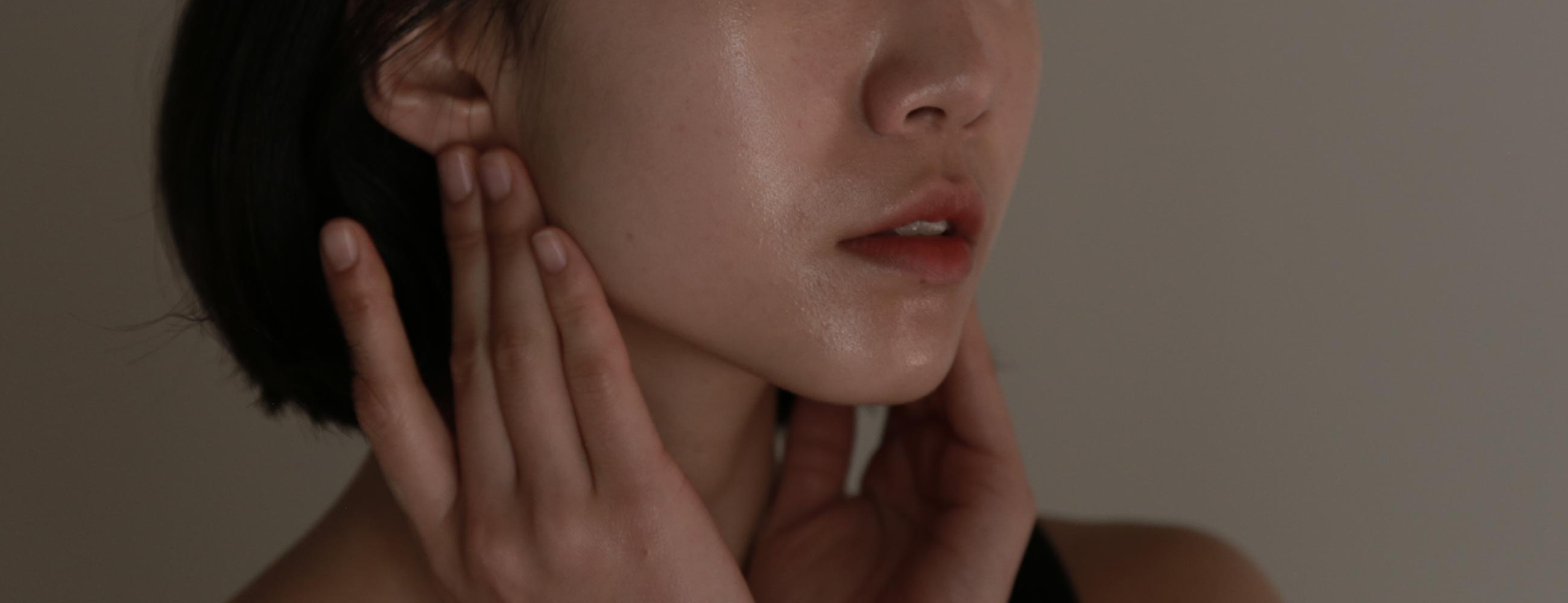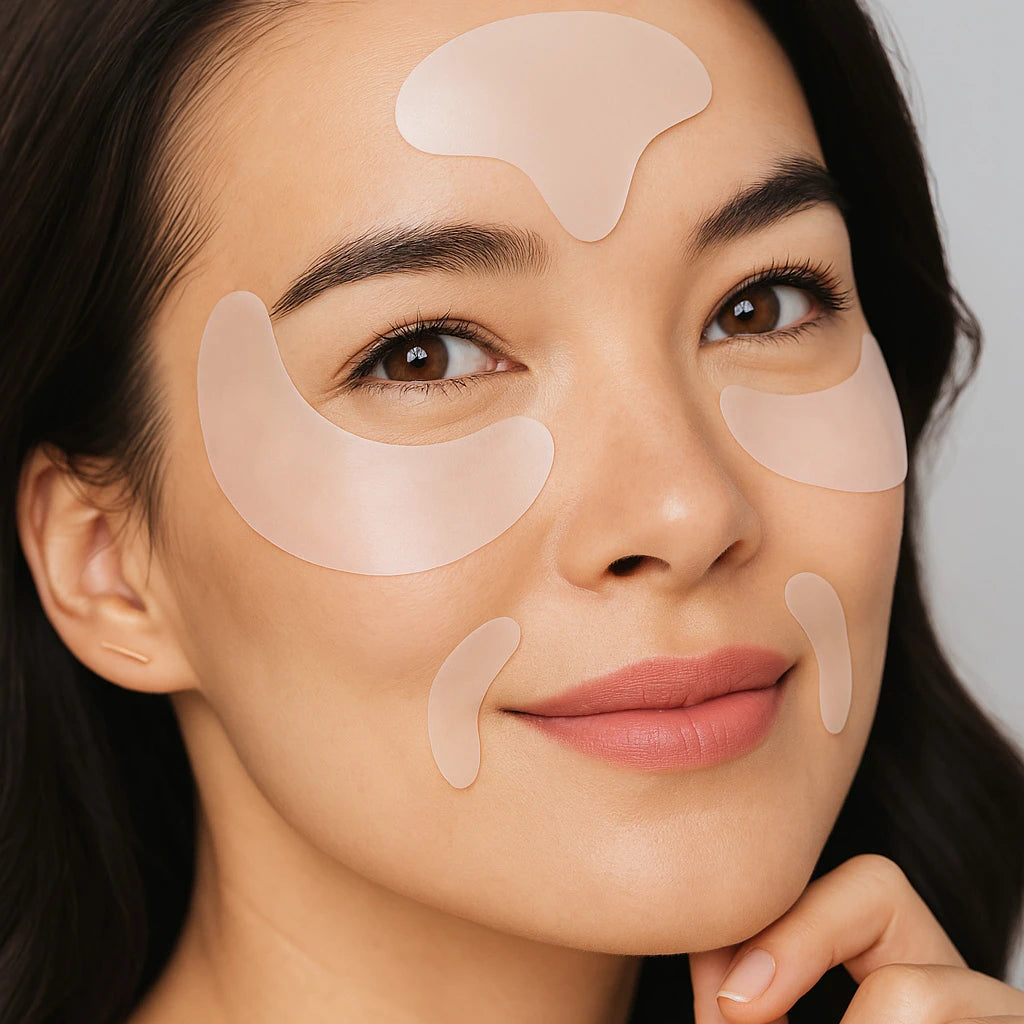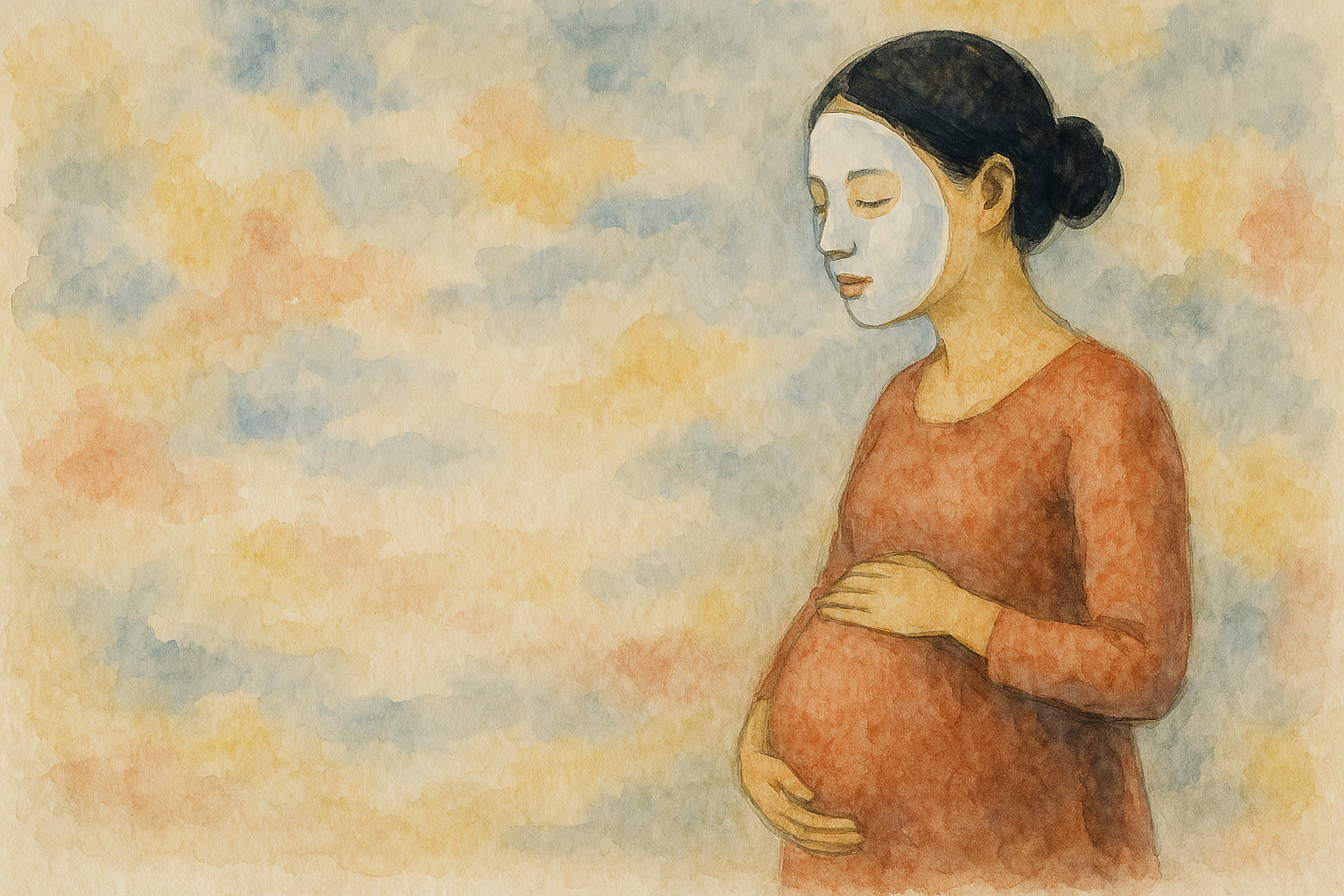In South Korea, the importance of skincare is ingrained from a young age, emphasising the significance of maintaining the health of the body’s largest organ: the skin. This comprehensive guide explores the various facets of the Korean approach to preventing wrinkles and maintaining a youthful complexion.
Dietary Habits and Traditional Foods
The dietary habits integral to Korean culture play a crucial role in maintaining skin health, emphasising a diet rich in nutrients, antioxidants, and natural ingredients. This holistic approach to nutrition not only supports overall health but also enhances skin quality, directly influencing its texture, elasticity, and youthfulness. Here’s a detailed look at the components of the traditional Korean diet that contribute significantly to maintaining healthy skin:
Bone Broths: A quintessential element in Korean cuisine, bone broths like Seolleongtang (a milky beef bone soup) are simmered for hours to extract maximum nutrients from the bones. These broths are laden with collagen, which is pivotal for skin elasticity and firmness, and glycosaminoglycans that support hydration and rejuvenation of skin cells. The minerals such as calcium, magnesium, and phosphorus in these broths also play vital roles in skin health, making these soups not only comforting but also beneficial for maintaining youthful skin.
Fermented Vegetables: Kimchi, the hallmark of Korean food, exemplifies the health benefits of fermented foods. Made from cabbage and other vegetables that are fermented with probiotic lactic acid bacteria, kimchi promotes a healthy gut microbiome, which is essential for reducing inflammation and preventing skin conditions like eczema and acne. Kkakdugi, a type of radish kimchi, also contributes to this with its high vitamin C content, further supporting skin health.
Healthy Fats: The Korean diet includes moderate consumption of foods rich in healthy fats, such as Samgyeopsal (grilled pork belly). These fats are crucial for maintaining the integrity of the skin barrier, which helps retain moisture and protects against environmental stresses. The balanced intake of saturated and unsaturated fats contributes to the suppleness and vibrancy of the skin.
Seafoods: Seafood is a staple in the Korean diet, celebrated not only for its flavor but also for its skin-enhancing properties. Fish such as mackerel and salmon are high in Omega-3 fatty acids, which are known to reduce inflammation and are essential for maintaining the health of skin cells. Zinc, abundant in shellfish, aids in the production and repair of new cells, including skin cells.
Organ Meats: Often overlooked in Western diets, organ meats are a significant part of Korean culinary traditions. Rich in vitamins A, B, and D, as well as minerals like iron and selenium, these meats support skin regeneration and protect against oxidative damage that can lead to premature aging.
Variety of Side Dishes: The Korean table is never complete without an assortment of Banchan (side dishes), which usually feature a wide range of vegetables. These dishes are not only a feast for the eyes but are also packed with antioxidants from garlic, peppers, and leafy greens, which combat free radicals, thereby preventing the breakdown of collagen and elastin in the skin.
Natural Beverages: Beverages like barley tea and corn tea are staples in the Korean diet, appreciated for their roles in promoting skin health. These teas are rich in antioxidants and minerals, aiding in detoxification and hydration, crucial elements for maintaining skin elasticity and preventing dryness.
Low Sugar Intake: Koreans generally consume less sugar compared to Western diets. Lower sugar intake helps minimise glycation, a process where sugar molecules attach to and damage proteins like collagen in the skin. This reduction in sugar not only helps in maintaining a more stable insulin level but also reduces inflammation and oxidative stress, contributing to fewer signs of aging and a clearer, more radiant complexion.
Through these dietary practices, Koreans not only nurture their bodies but also their skin, emphasising a diet that supports longevity and natural beauty. This approach to eating, combined with an overall lifestyle that priorities wellness and balance, is what helps maintain their famously youthful and resilient skin. You can read more about the foods Koreans eat to achieve glass skin here.
Sun Protection
In Korea, meticulous sun protection is a fundamental aspect of skincare, deeply embedded in daily routines and lifestyle choices, reflecting the high level of awareness about the damaging effects of sun exposure on skin health.
Sunscreen Usage: The rigorous application of sunscreen is paramount in Korea, with SPF 50+ being the standard choice among individuals of all ages. Koreans apply sunscreen not only during the glaring summer months but also on overcast days and throughout the winter season. This consistent application is crucial, as UV A and UV B rays, known for accelerating skin aging and increasing cancer risk, can penetrate clouds and are present year-round. Sunscreen is applied liberally and regularly, often reapplied every two hours, especially during prolonged outdoor activities.
Protective Gear: Koreans extend their sun protection beyond topical applications. Sun hats, caps, and particularly sun umbrellas are commonly used, especially during the peak sun hours. In bustling urban areas like Seoul, it’s not uncommon to see large sun umbrellas stationed at busy zebra crossings, providing pedestrians with temporary relief from the sun’s harsh rays. This use of physical barriers helps reduce direct skin exposure to sunlight, further preventing the formation of wrinkles and other signs of sun damage.
Moisturizers and BB Creams with SPF: An additional layer of defense is provided through moisturizers and BB (Blemish Balm) creams that contain SPF. These products serve dual purposes— they hydrate the skin while also offering protection against UV radiation. They are particularly favored for their multifunctional capabilities, such as evening out skin tone, hydrating, and providing a light, non-greasy layer of sun protection. This combination makes them ideal for everyday use, ensuring that skin remains protected without the need for multiple layers of different products.
Through these comprehensive measures, Koreans maintain a vigilant approach to sun protection, which is a critical component of their broader skincare philosophy. This consistent and layered protection is a key factor in their ability to maintain youthful, resilient skin well into later years.
Skincare Routine
A disciplined skincare routine is key to maintaining youthful skin:
10-Step and 5-Step Routines: Depending on personal preference, Koreans may follow an extensive skincare routine that includes cleansing, toning, essence application, treatments for specific concerns, moisturizing, and more. This routine is famed for its thoroughness and effectiveness in maintaining skin health and vitality.
Discipline and Cultural Attitudes
Long-term commitment and daily care are essential. Koreans view skincare as a disciplined investment rather than a quick fix. This cultural emphasis on regular skincare maintenance is reflected in the diligent use of skincare products and routines over the years, contributing significantly to fewer wrinkles and healthier skin.
Collagen and Supplements
As we age, our skin undergoes inevitable changes, one of the most significant being the loss of collagen, the protein responsible for keeping our skin firm and elastic. In Korean culture, where much emphasis is placed on maintaining a youthful appearance, various strategies are employed to combat the natural decline in collagen production. This includes the use of collagen supplements, a diet rich in collagen-promoting nutrients, and skincare products infused with ingredients known for their efficacy in enhancing collagen synthesis.
Collagen Supplements: Collagen supplements have become a staple in the health and beauty regimen of many Koreans. These supplements are often derived from marine or bovine sources and are available in various forms, including powders, capsules, and drinks. The hydrolyzed form of collagen found in these supplements is easily absorbed by the body, helping to replenish the collagen that is lost with age. Regular consumption of collagen supplements is believed to help improve the skin’s appearance by reducing wrinkles and dryness, thus maintaining its suppleness and elasticity. The popularity of these products in Korea is not just a trend but a reflection of the broader cultural appreciation for preventative health care and aesthetics. More here: Do Koreans use Collagen
Dietary Sources: The Korean diet, known for its rich array of seafood and vegetable dishes, naturally supports collagen production due to its high content of omega-3 fatty acids and antioxidants. Omega-3 fatty acids, found abundantly in fish such as salmon and mackerel, are essential fats that the body cannot produce on its own. These fats are crucial for maintaining the health of the skin by regulating oil production, enhancing hydration, and potentially mitigating the impact of aging by boosting collagen synthesis. Additionally, the Korean diet includes other collagen-rich foods such as chicken feet, pork skin, and gelatinous cuts of meat, which provide the amino acids necessary for collagen production.
K-Beauty Ingredients: Beyond dietary measures, Koreans also turn to topical skincare products to support their skin’s collagen levels. K-beauty has long been at the forefront of integrating traditional herbal ingredients with modern science to create effective skincare solutions. Ingredients like red ginseng and green tea are staples in these formulations. Red ginseng, a revered herb in Korean medicine, is celebrated for its anti-aging properties, helping to enhance skin firmness and reduce the appearance of fine lines and wrinkles by aiding in collagen synthesis. Green tea is rich in catechins, powerful antioxidants that protect the skin from environmental stressors while supporting overall skin health by improving elasticity and texture.
These traditional ingredients are often combined with advanced technologies to increase their skin benefits. For example, serums and creams may contain encapsulated retinol or peptides, which are known to stimulate collagen production and repair skin at a cellular level.
Furthermore, the holistic approach taken by Koreans extends to other natural ingredients and modern derivatives like Vitamin C, hyaluronic acid, and ceramides, which are frequently used to enhance skin hydration, barrier function, and collagen density. This comprehensive approach ensures that the skin is not only receiving collagen through supplements but is also being encouraged to produce its own collagen through dietary and topical solutions.
The Korean approach to maintaining skin elasticity and firmness through collagen intake and supplementation is multi-faceted, incorporating a well-rounded diet, advanced skincare science, and traditional herbal wisdom. This integrated strategy not only helps slow down the aging process but also supports the skin in maintaining its youthful resilience and glow, reflecting a deep cultural appreciation for both natural beauty and scientific advancement in skincare.
Use of Sheet Masks
Sheet masks, also known as pack masks, are a cornerstone of Korean skincare, reflecting a culture deeply invested in meticulous, targeted skin treatments. These masks, embraced for their simplicity and effectiveness, are an essential ritual in the Korean beauty regimen, employed either daily or every other day depending on individual skin needs and lifestyle choices.
The essence of sheet masks lies in their design and function. These face-shaped fabric sheets are soaked in a concentrated serum packed with skin-nourishing ingredients. The sheet itself is made from a variety of materials including cotton, bio-cellulose, or hydrogel, which not only helps in delivering the serum effectively but also ensures that the mask adheres snugly to the skin, reducing evaporation and allowing maximum absorption of the serum.
Typically, a sheet mask session lasts about 20 minutes, during which the skin is allowed to absorb the serum deeply. This process provides an intense hydration boost and delivers various active ingredients directly to the skin. The ingredients in these serums are carefully selected based on their ability to address specific skin concerns—from deep hydration and brightening to anti-aging and soothing inflamed skin. Common ingredients include hyaluronic acid, which dramatically increases skin moisture levels; niacinamide, known for its brightening properties; and various antioxidants, which protect the skin from environmental damage and aging.
Another aspect that makes sheet masks particularly appealing is their versatility and the immediate results they offer. Different formulations are available to treat various skin conditions such as dullness, dryness, excessive oiliness, or visible signs of aging. This personalised approach allows users to tailor their skincare routines to their specific needs, adapting the types of masks they use based on seasonal changes or varying skin conditions.
The popularity of sheet masks in Korea has also been fueled by their convenience and the pampering experience they provide. They are easy to apply and remove, making them a quick, no-fuss addition to both morning and evening skincare routines. Moreover, the ritual of applying a sheet mask offers a moment of relaxation and self-care amidst busy schedules, providing not only a skincare benefit but also a therapeutic respite.
The cultural impact of sheet masks in Korea extends beyond mere personal use. They are a popular gift item and a staple in tourist purchases, symbolising the appeal of K-beauty worldwide. The global fascination with these masks underscores their efficacy and the broader allure of Korean skincare innovations.
The best way to try Korean sheet masks is by subscribing to the K-Beauty box Sonagi. Sonagi will send you 5 different premium Korean masks every month.
The use of sheet masks in Korean skincare is a practice grounded in the philosophy of preventive care and meticulous attention to detail. It encapsulates the broader Korean approach to skincare, which prioritizes regular maintenance and prevention over corrective measures. By integrating such potent treatments into regular skincare routines, Koreans maintain their famously pristine and youthful skin. This methodical approach to skincare, embodied by the widespread use of sheet masks, offers a practical yet luxurious means to achieve and maintain healthy, radiant skin.
The Korean approach to avoiding wrinkles is holistic, combining diet, disciplined skincare routines, and cultural practices that prioritise long-term skin health. By adopting some of these practices, even non-Koreans can benefit from the age-defying techniques that are rooted deep in Korean culture.

















